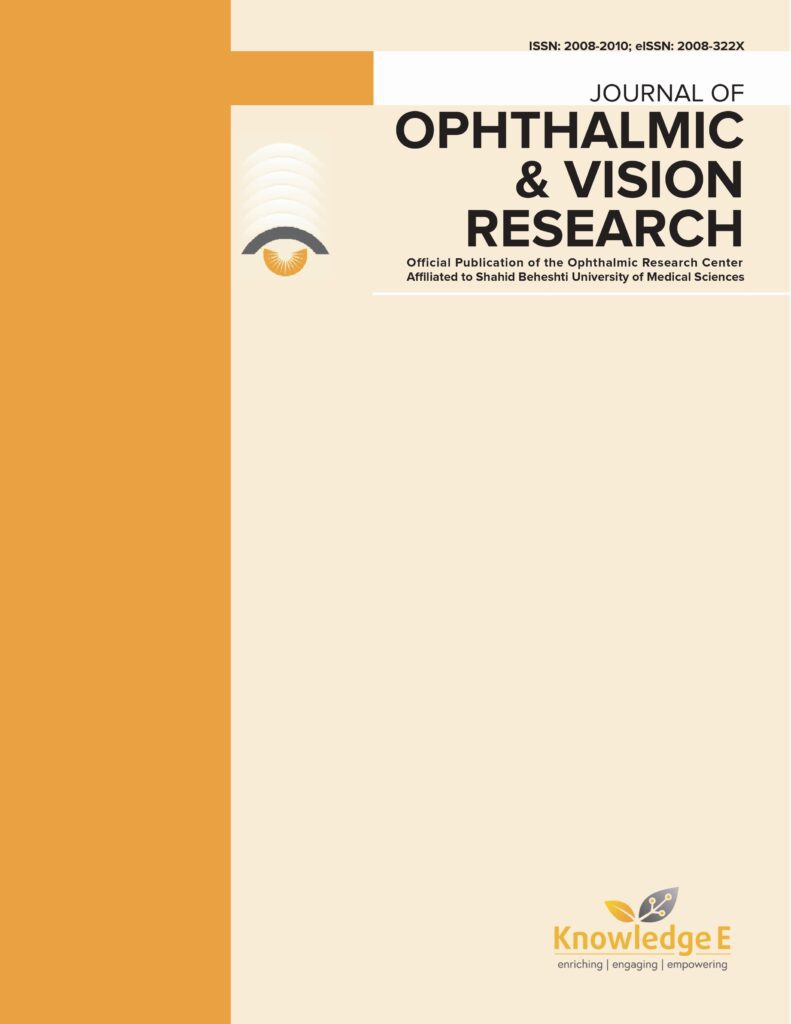
Journal of Ophthalmic and Vision Research
ISSN: 2008-322X
The latest research in clinical ophthalmology and vision science
Pigmented Corneal Ulcer
Published date: Oct 24 2019
Journal Title: Journal of Ophthalmic and Vision Research
Issue title: October–December 2019, Volume 14, Issue 4
Pages: 506 - 508
Authors:
Abstract:
Purpose: To report the clinical characteristics, laboratory findings, and treatment of a rare case of keratitis caused by pigmented fungi Bipolaris hawaiiensis.
Case Report: A 55-year-old man presented with a history of trauma with vegetative matter in his left eye. Slit lamp biomicroscopic examination revealed the presence of a brownish-black pigmented plaque with surrounding infiltrates. Corneal scrapings revealed multiple septate hyphae. Culture revealed growth of the Bipolaris species. The patient was treated with topical natamycin 5%, topical voriconazole 1%, and oral itraconazole followed by intracameral amphotericin B (5 μg/mL). The patient responded well to the treatment.
Conclusion: Brown pigmented infiltrates are an important clinical feature of dematiaceous fungi. B. hawaiiensis is a rare cause of corneal phaeohyphomycosis. Our patient responded well to intracameral amphotericin B, which obviated the need for penetrating keratoplasty.
Keywords: Corneal Ulcer, Keratitis, Pigmented
References:
1. Chowdhary A, Singh K. Spectrum of fungal keratitis in North India. Cornea 2005;24:8–15.
2. Tanure MA, Cohen EJ, Sudesh S, Rupuano CJ, Laibson PR. Spectrum of fungal keratitis at Wills Eye Hospital, Philadelphia, Pennsylvania. Cornea 2000;19:307–312.
3. Garg P, Gopinathan U, Chaudhary K, Rao GN. Keratomycosis: clinical and microbiologic experience with dematiaceous fungi. Ophthalmology 2000;107:574–580.
4. Gopinathan U, Garg P, Fernandes M, Sharma S, Athmanathan S, Rao GN. The epidemiological and laboratory results of fungal keratitis: a 10 year review at referral eye care center in South India. Cornea 2002;21:555–559.
5. Ajello L, Georg LK, Steigbigel RT, Wang CJ. A case of phaeohyphomycosis caused by a new species of phialophora. Mycologia 1974;66:490–498.
6. Cunha KC, Sutton DA, Fothergill AW, Cano J, Gené J, Madrid H, et al. Diversity of Bipolaris species in clinical samples in the United States and their antifungal susceptibility profiles. J Clin Microbiol 2012;50:4061–4066.
7. Anandi V, Suryawanshi NB, Koshi G, Padhye AA, Ajello L. Corneal ulcer caused by Bipolaris hawaiiensis. J Med Vet Mycol 1988;26:301–306.
8. Bashir G, Hussain W, Rizvi A. Bipolaris hawaiiensis keratomycosis and endophthalmitis. Mycopathologia 2009;167:51–53.
9. Garg P, Vemuganti GK, Chatarjee S, Gopinathan U, Rao GN. Pigmented plaque presentation of Dematiaceous fungal keratitis: a Clinicopathologic Correlation. Cornea 2004;23:57–576.
